The dynamic range cameras for shooting indoors and outdoors.
Regardless of your level of experience in photography, you can benefit from using the dynamic range camera to improve the quality of your pictures.
It might be difficult for beginner photographers to understand the meaning of dynamic range and discover why this parameter is so important. Besides, it might be challenging to select the right camera to ensure that you will stay within your budget like it was with me.
I had been taking photos for years without having a solid grasp of what a dynamic range is.
Now, to help you avoid the mistakes I made, I suggest you learn more about basic concepts and discover how to select a suitable camera for your needs.
In addition, I tested 2 cameras, one of which had the highest dynamic range value and the other one had the lowest.
While the Nikon D850 is a good choice for experienced photographers, you can buy a decent model with the dynamic range of 12-13 stops for casual use.
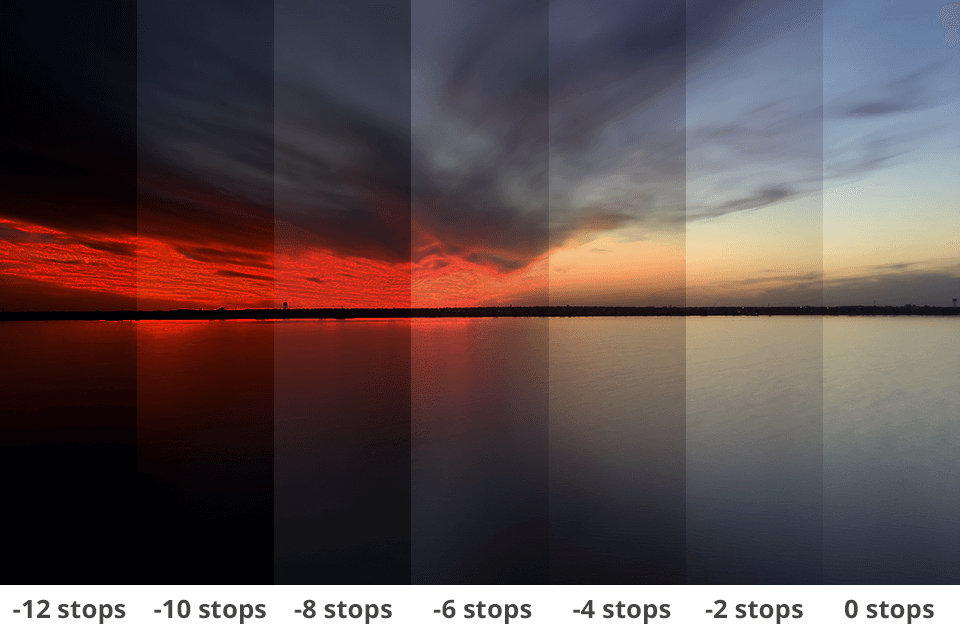
If you want to become a professional photographer, you must learn more about the concept of dynamic range.
A camera with the best dynamic range takes more detailed pictures, which enables photographers to capture high-contrast surroundings.
Dynamic range is measured in f-stops, stops of light or EV (Exposure Value or Exposure Compensation).
The higher this value is, the more detailed your photo will be.
The highest dynamic range value is at the base ISO level, which is around 100.
However, you can measure this parameter with high accuracy only in ideal lighting conditions, without overly dark and light areas.
If the lighting situation changes, it will be difficult for your camera to read 15 stops of dynamic range.
Discover which camera sensor will be perfect for your project.
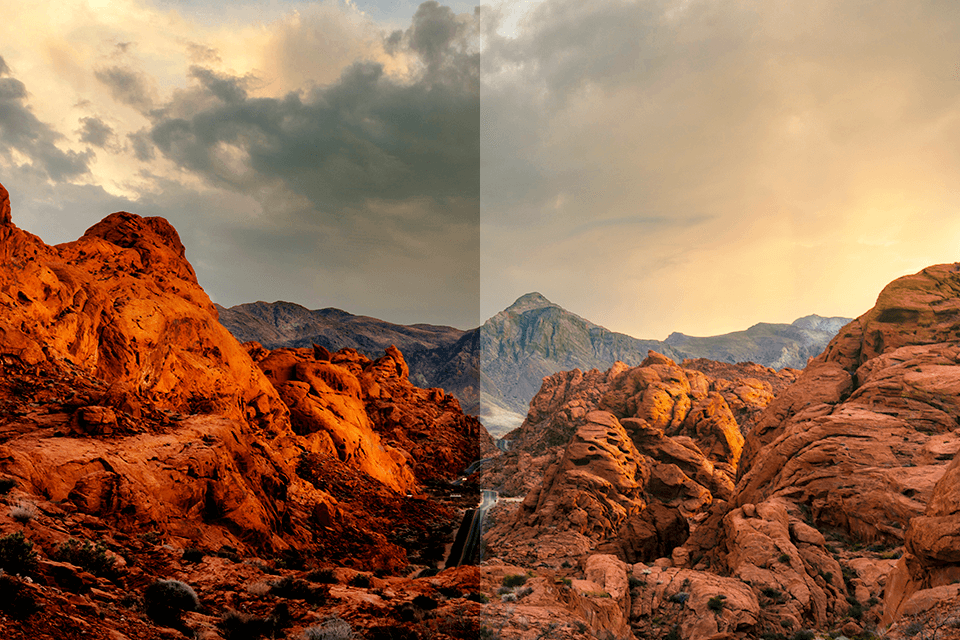
What a human eye sees and what a camera can capture are two different images.
To put it simply, if you want to get a more realistic image, make sure to select a camera with the best dynamic range.
Lacking a high dynamic range camera? No sweat! Just flick on HDR mode, a nifty trick in most new DSLR and mirrorless camera brands from the big guns like Canon, Pentax and Nikon.
It's like making a photo salad – snapping pics at varied exposures and mixing them into one detail-rich image. But beware, it's like adding too much dressing; things can get a touch surreal.
From my experience, it's a bit of a balancing act – HDR can turn your photos into a Van Gogh masterpiece or a kid's finger painting, especially if anything moves.
It's great for still life, but for action shots? Might as well try photographing a toddler on a sugar rush – blurry city!
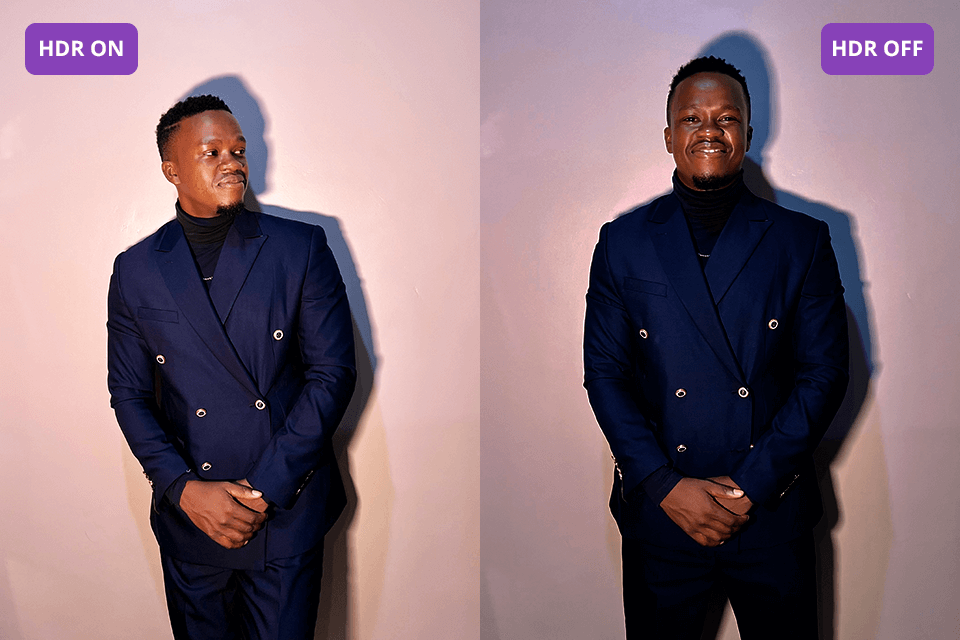
Besides, HDR photography techniques are less useful for capturing moving subjects or scenes with moving elements, as such pictures may turn out to be blurry.
Type: DSLR | Resolution: 45.7MP | Video Quality: 4K | ISO: 32-102,400
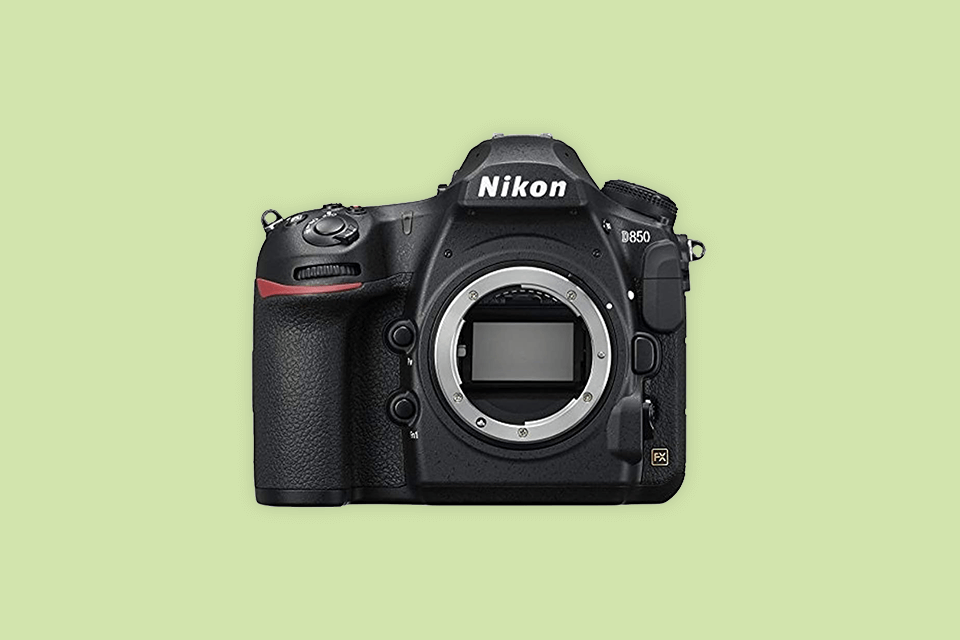
Jumping into the world of Nikon D850, even briefly, was like opening my eyes to a whole new spectrum of colors.
The dynamic range? Out of this world! It's like having a VIP pass to the full scale of tones, from glaring sunbeams to the darkest dungeon corners.
And oh, the BSI sensor? It's like night vision for photographers, capturing those low-light scenes of landscapes or in the clubs without turning them into a grainy mess.
For someone like me, who's just dipped their toes into photography, this Nikon camera for video felt like driving a luxury car for the first time – intimidating, but oh so thrilling.
Perfect for newbies? Absolutely, it's like the camera does half the work for you, but don't tell the pros that!
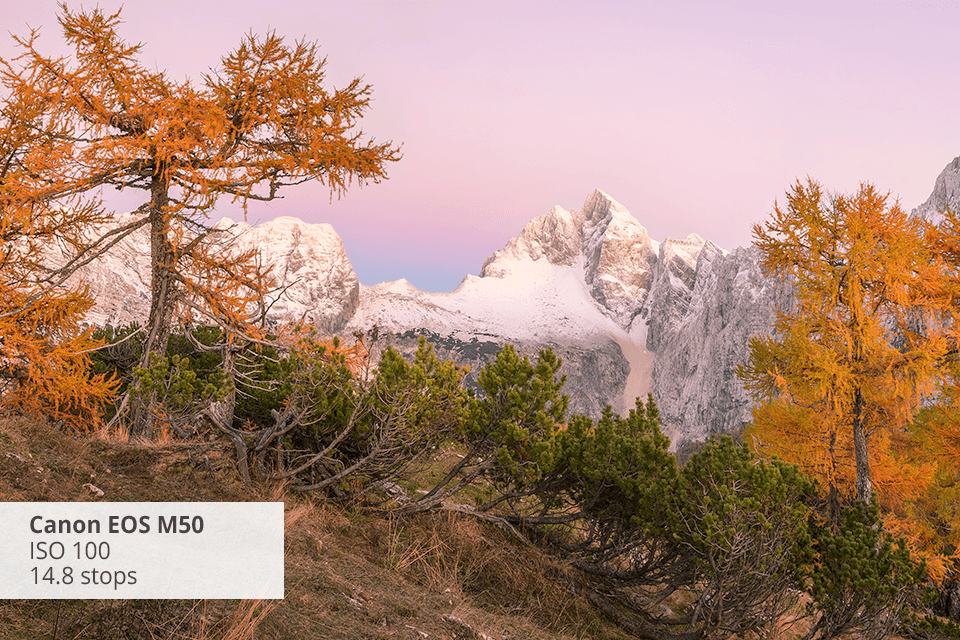
Another feature worth mentioning is the camera's auto white balance algorithm.
It automatically detects the ambient lighting and optimizes the look of any image, saving me time in post-processing.
Type: Mirrorless | Resolution: 24MP | Video Quality: 4K | ISO: Up to 51,200
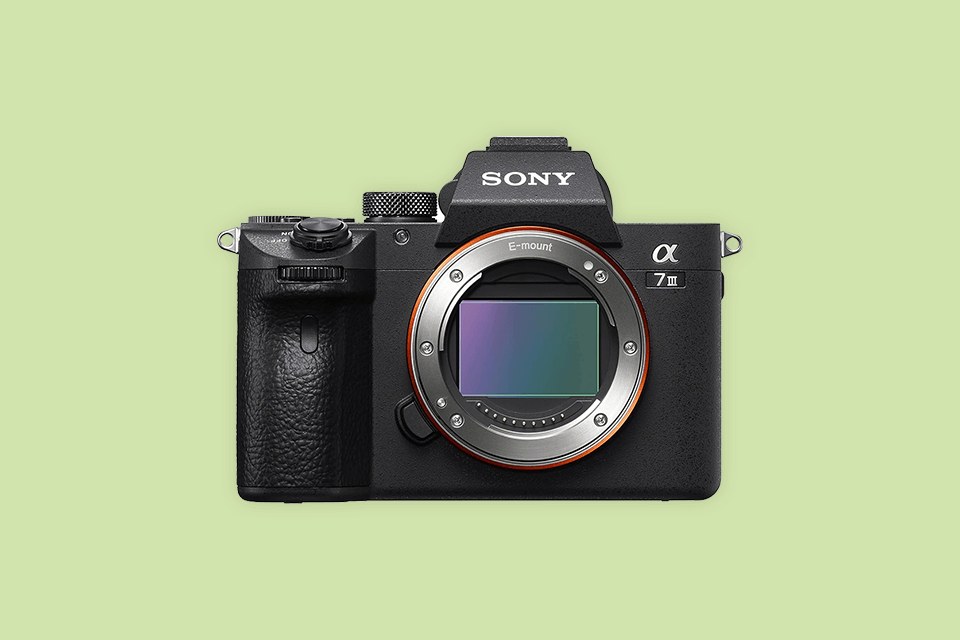
Testing the Sony α7 III felt like unboxing a secret gadget from a spy movie.
Its dynamic range is a game-changer for those elusive nature shots, capturing every hidden detail in shadows and highlights. It's like having night vision goggles and X-ray specs rolled into one camera.
Compared to the previous version, the autofocus and tracking are quicker than a cat pouncing on a mouse.
And 4K video recording? Smooth as silk, making you feel like a Hollywood director.
It's like Sony crammed a whole studio's worth of features into this camera with up to 30 frames per second, HDR support and various picture profiles and logs.

Sure, it's just a Sony camera, not a time machine, but it's pretty close to magic for us retouchers!
However, its base ISO is about one stop higher than its predecessor and the α9. It may not be ideal for photographers who heavily rely on shooting at lower ISOs.
Type: Mirrorless | Resolution: 61MP | Video Quality: 4K | ISO: 50-51,200
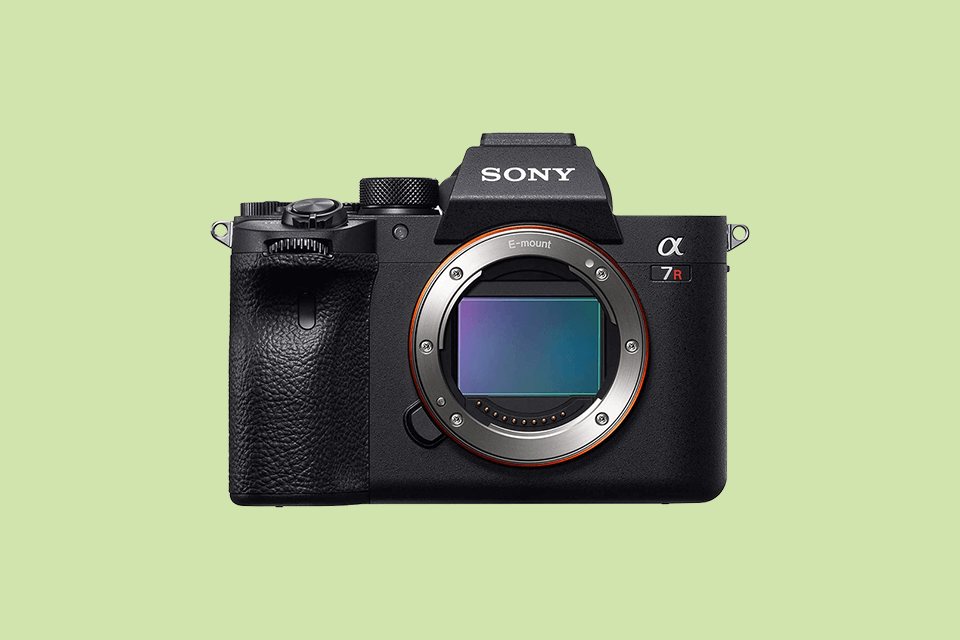
Testing the Sony α7R IV was like stepping into a resolution revolution.
With its 61MP sensor, it’s like having a microscope for a camera - every little detail pops!
The dynamic range is like a paint palette with unlimited colors, capturing scenes in vivid detail, even in those tricky lighting situations.
This is especially beneficial if you’re a landscape and architectural photographer.
The new EVF is like HD TV for your eye, and those beefier dials feel like they've been hitting the gym.
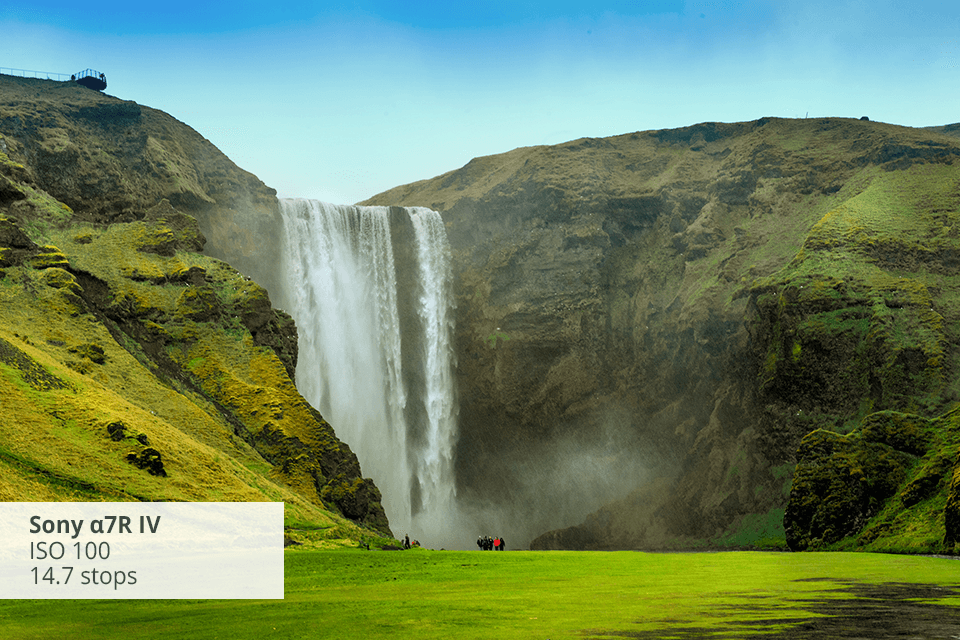
And don’t get me started on the Pixel Shift Multi mode – it's like stitching together a superhero costume, pixel by pixel, for the ultimate high-res shot.
But, as with all superheroes, there's a kryptonite – this camera for photography is a bit bulky, and let's just say, it's not the fastest sprinter in the camera Olympics.
Type: Mirrorless | Resolution: 45MP | Video Quality: 8K | ISO: 100-51,200
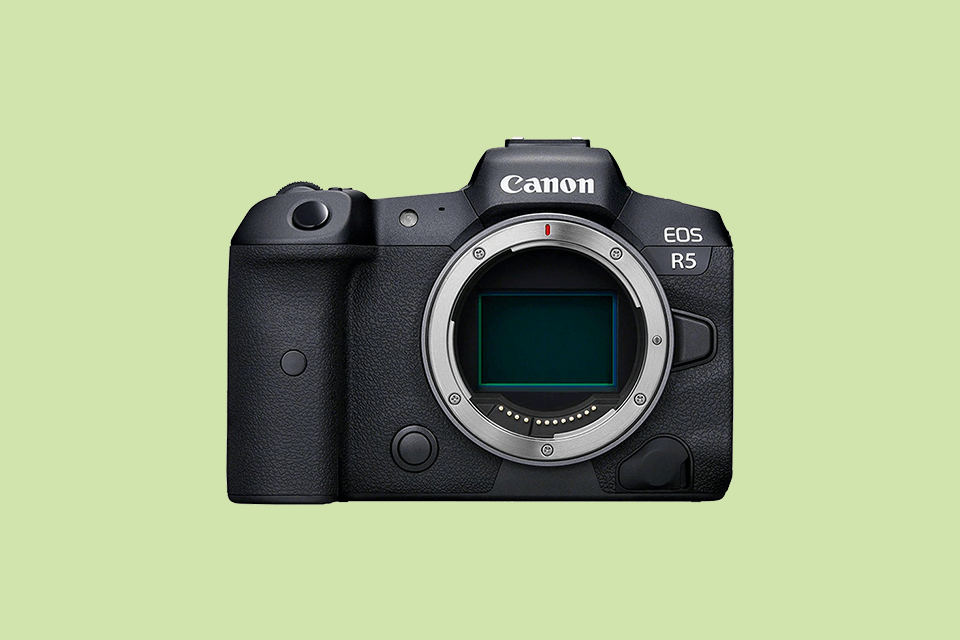
What I like the most about the Canon EOS R5 was its autofocus that is so spot-on, it's almost like the camera has psychic powers – great for us portrait enthusiasts.
The build quality? This Canon camera is sturdy as a tank, defying weather like a superhero.
The image quality and high dynamic range are simply stunning, making every shot a potential gallery piece.
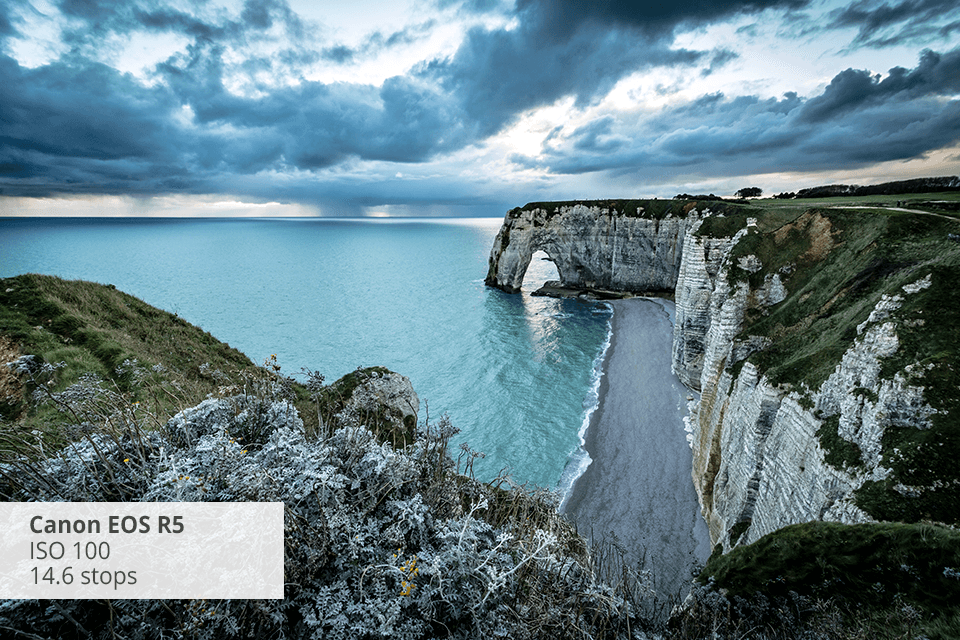
But it's not all roses – long exposures get a bit wobbly, and the camera can throw a bit of a heat tantrum.
For beginners, it's like getting a sports car when you're used to a sedan – exciting, but with a couple of quirks to master.
However, within reasonable exposure times, it performs solidly.
Type: Mirrorless | Resolution: 45.7MP | Video Quality: 4K | ISO: 32-102,400

Nikon Z7 can become like a breath of fresh air for a photography newbie.
It's a dynamic range superstar, handling shadows and highlights like a dream, even at its super low base ISO of 32.
Pushing those shadows around didn't faze it one bit - the images stayed clean.
It's like the Z7 has a sixth sense for colors, making every shot look incredible.
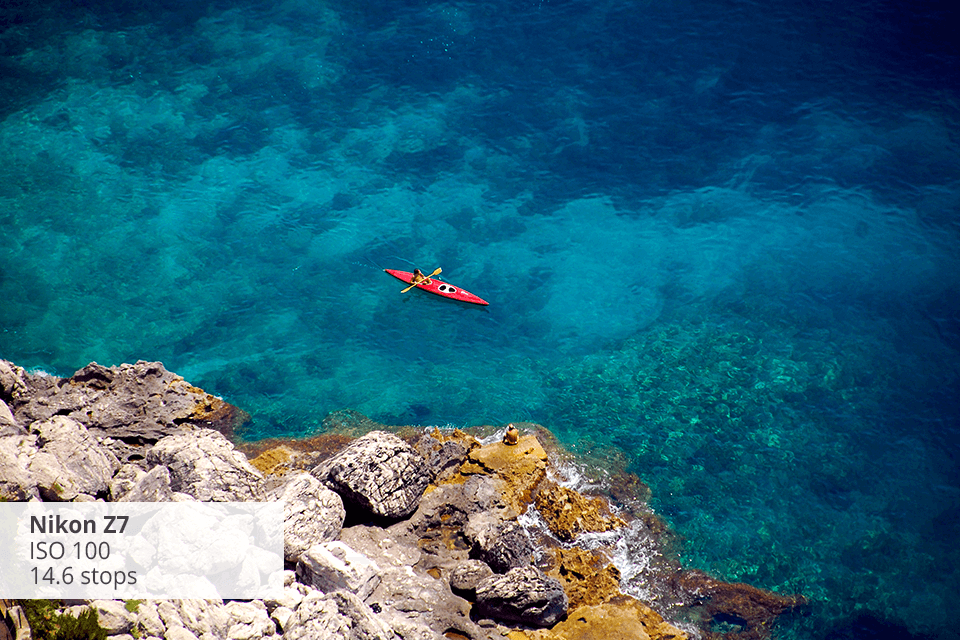
For landscapes, this mirrorless camera for beginners is a gem with its creamy blurred backgrounds.
Easy to use? Mostly, but with a few quirks to keep things interesting.
The high-resolution sensor also enables you to create incredibly detailed prints, up to 30 x 40 inches, without any noticeable softening.
Type: Mirrorless | Resolution: 47.3MP | Video Quality: 1080p | ISO: 50-50,000
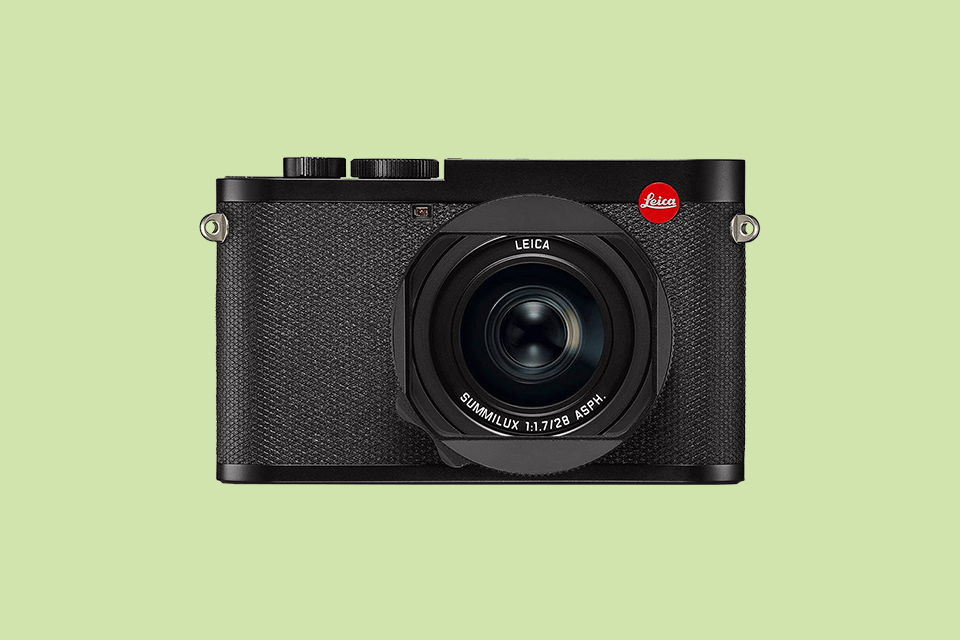
Trying out Leica cameras is usually like stepping into the high society of photography.
Its ability to handle shadows and highlights? Like a maestro conducting an orchestra.
The Kelvin white balance adjustments make getting that perfect color temperature as easy as pie.
Durability? Check.
The optical stabilization is a godsend for the shaky-handed among us, and the manual focus tab? A nod to old-school charm.
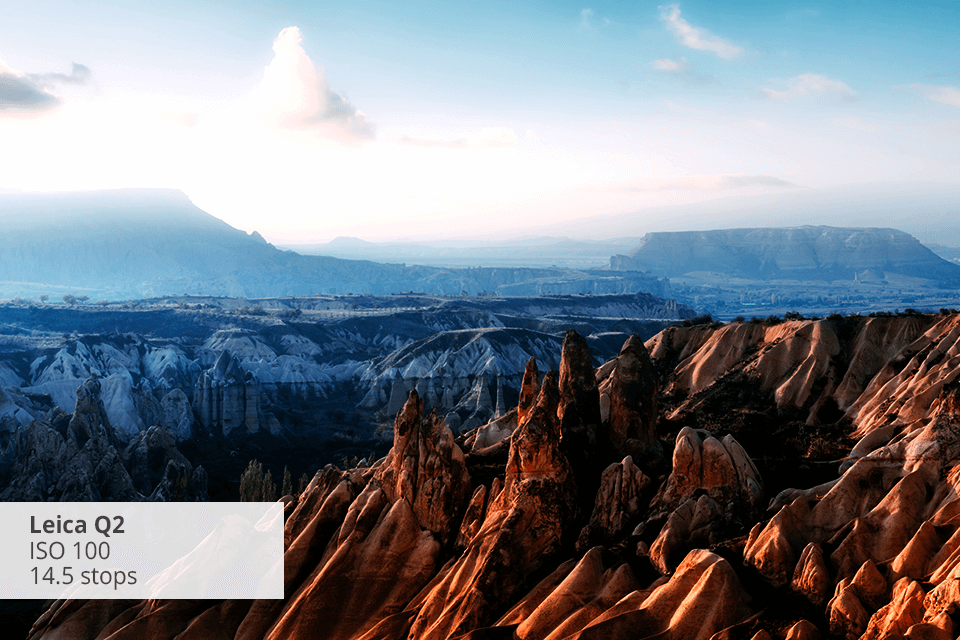
But, oh, the price tag! It's like buying a small diamond.
And let's not forget the cons: it's hefty for its size, and the battery life leaves you longing for more.
The autofocus system is top-notch, and there are plenty of manual focus aids, like magnified view and focus peaking, to assist you.
Type: Mirrorless | Resolution: 45.7MP | Video Quality: 8K | ISO: 64-102,400

For me the Nikon Z9 was a bit like dating someone who's almost perfect, but not quite "the one."
Its 45.7-megapixel sensor captures landscape photos beautifully, even in low light, making it a decent companion for twilight adventures.
However, it's not quite the dynamic range king, trailing behind its Sony rivals, especially at those higher ISOs where it should be great.

The auto bracket mode and the ability to merge images disappointed me a bit, but in the grand scheme of things, it's like bringing a knife to a gunfight in a world of more versatile cameras.
Plus, it has various options for color grading, such as an internal flat profile and N-Log, giving you more creative control.
Type: Mirrorless | Resolution: 24MP | Video Quality: 4K | ISO: 100-51,200
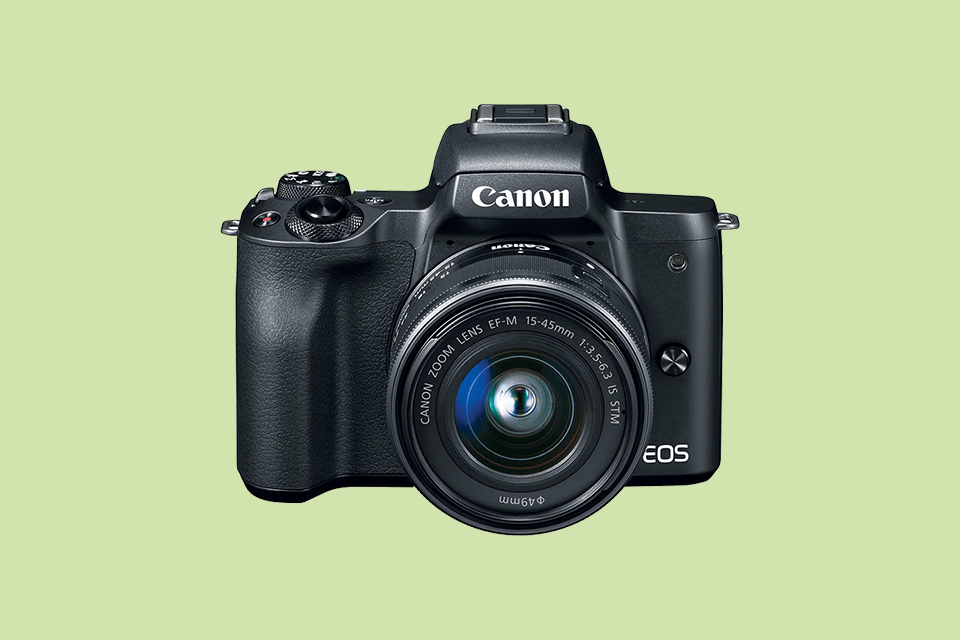
It's not the dynamic range champion, but hey, for the price, you're getting some serious bang for your buck.
The 24.1-megapixel sensor and C-RAW format are like having a miniaturizing ray gun for your files – zapping them down by 40%.
Vlogging? It's a dream vlogging camera.
4K video and built-in stabilization make it a smooth operator.
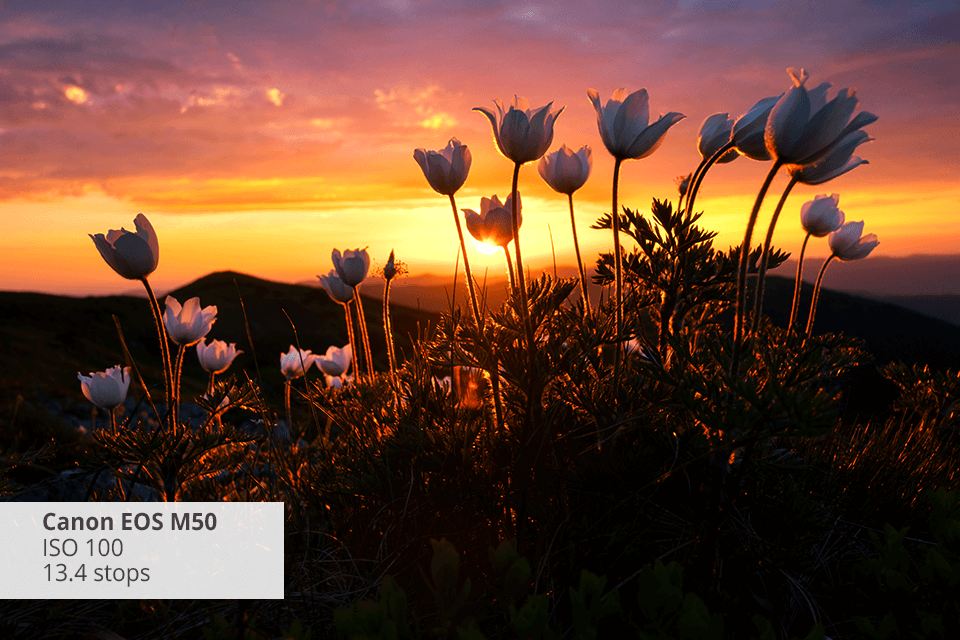
But, remember, it's like a budget superhero – great powers, but missing some gadgets (hello, autofocus quirks and no headphone jack!).
In the world of budget high dynamic range cameras, it's like the best sidekick you didn't know you needed.
Take photos in RAW. Unlike pictures in JPEG format, RAW files allow storing more data. It’s easier to enhance RAW photos and preserve a wider dynamic range.
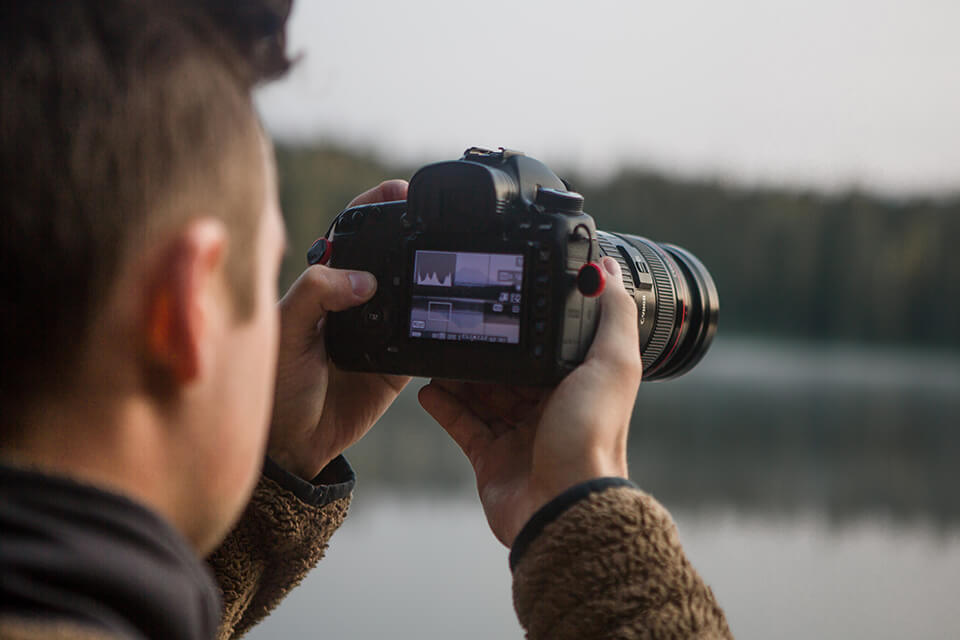
Pay attention to the highlights. The highest dynamic range camera allows you to capture details in the light areas of the scene. You can utilize your camera's histogram to see whether you capture crucial data.
Bracketing. To create a bracketing photo, you need to snap multiple pics of the same scene using different exposure levels. Then, you can combine them into a single HDR picture.
Utilize graduated neutral density filters. Such filters allow users to balance the exposure levels between light and shadowy areas, which makes them especially suitable for landscape photographers. Using them, you can capture more dynamic range and get realistic images.
Expose to the right (ETTR). This method requires a photographer to overexpose a picture a bit to preserve more detail in dark areas. However, when using a camera with the highest dynamic range, you should avoid making light areas too overexposed.
Post-processing. Use such professional tools as Adobe Lightroom or Photoshop to preserve the details in highlights and shadows when editing your photos. HDR software is also useful for merging bracketed shots to create a picture with a high dynamic range.
If you do not have enough time to edit your photos, you can outsource this task to the FixThePhoto retouchers. This agency has a team of experienced photo editors who know how to improve a dynamic range without giving pictures an overly edited look. They can perform exposure blending, edit HDR images, and recover details in highlights and shadows.
Leverage natural light. Even when using a camera with highest dynamic range, many photographers prefer taking photos during the golden hour or use diffused light to minimize the contrast between light and dark parts of a photo.
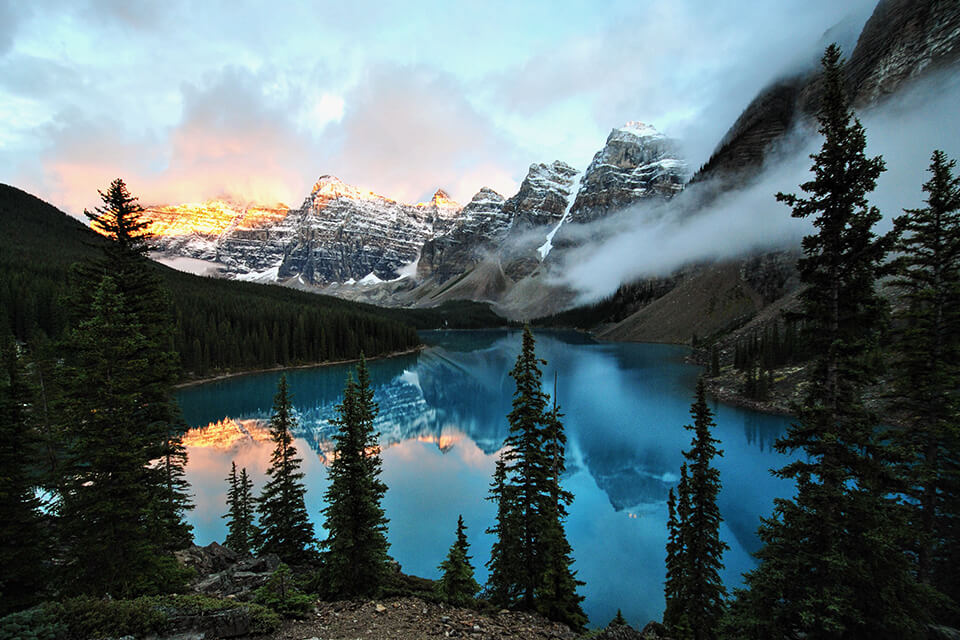
Keep ISO low. While you may add some brightness to your pictures by increasing the ISO value, the camera’s dynamic range will decrease. This is why it is better to avoid increasing ISO. A high dynamic range mirrorless camera allows photographers to take photos at a wider aperture or use a low shutter speed.
My personal advice would be not to look at the models with the highest ISO value. Instead, pay attention to resolution, AF capabilities, and the performance of a model. A camera with a high dynamic range enables you to capture light and dark areas with a high level of detail, which makes such models best suited for professional use.
You can estimate the dynamic range of your camera with the help of a luminosity histogram, which allows you to see the number of pixels at a specific level of intensity. A well-balanced histogram on camera has high values on the right and low values on the left. If the histogram looks unbalanced, it might indicate that the scene that you want to capture has a more impressive dynamic range than your camera supports. In this case, you might need to capture photos with different exposures to create an HDR picture.
High dynamic range in cameras is like having night-vision goggles at a ninja battle – it lets you see and capture details in the shadows and highlights that would otherwise be hidden in darkness or washed out in light. It's crucial for those breathtaking shots where every detail counts, like in landscapes or in high-contrast scenes. And when it comes to HDR screens, it's like trading a black-and-white TV for a 4K ultra-HD one – the difference in tones and details is stunning.
First, get cozy with your camera's histogram; it's like a recipe book for balancing shadows and highlights. Experiment with exposure bracketing. Also, embrace RAW format that truly gives you more to work with in post-processing. Remember, high dynamic range is your secret ingredient for those stunning shots where every detail shines, from the darkest shadow to the brightest highlight.
Those high-end cameras with 12-15 ISO range are surely super but they're pricier than those models for everyday shots, a 10-13 range camera can also show you some pretty tasty images.
| Nikon D850 | Canon EOS M50 | |
|---|---|---|
|
|
Highest dynamic range |
Lowest dynamic range |
|
Image Quality |
45.7MP |
24MP |
|
ISO |
32-102,400 |
100-51,200 |
|
Portraits |
✔️ |
❌ |
|
Landscapes |
✔️ |
✔️ |
|
Low-Light |
✔️ |
❌ |
|
For Professional Video |
✔️ |
❌ |
|
Vlogging |
❌ |
✔️ |
As someone who's testing both, the Nikon D850 is like the wizard of high dynamic range photography – it captures landscapes and portraits with a spellbinding clarity.
It's the camera you bring when you want to impress your followers and future clients.

The Canon EOS M50? Well, it's the friendly neighbor.
Ideal for beginners and vloggers, it's like the friendly sidekick that won't overwhelm you with features.
Its 24.1MP sensor is great for everyday shots, but its 4K video is more of a teaser trailer than a blockbuster movie.